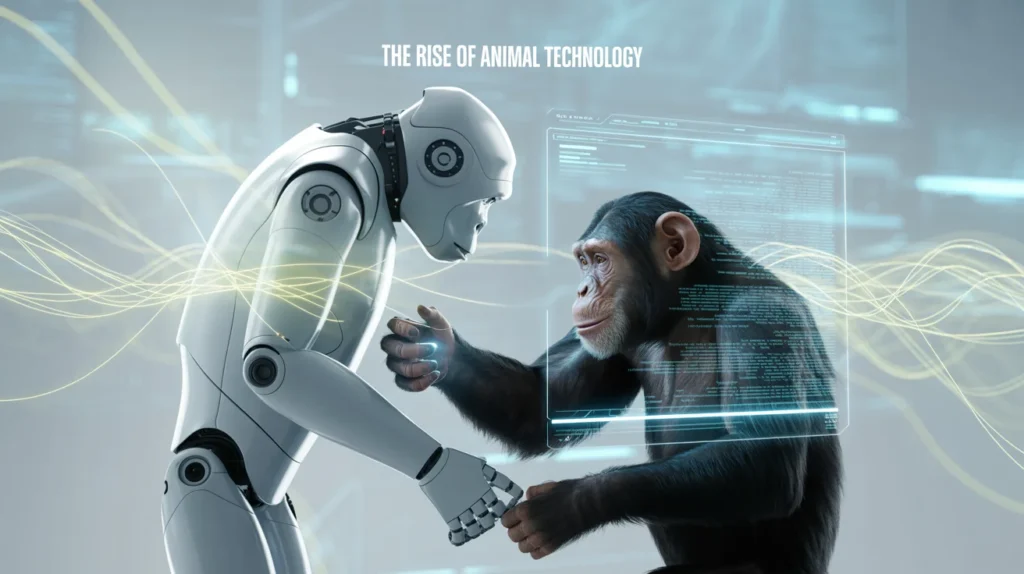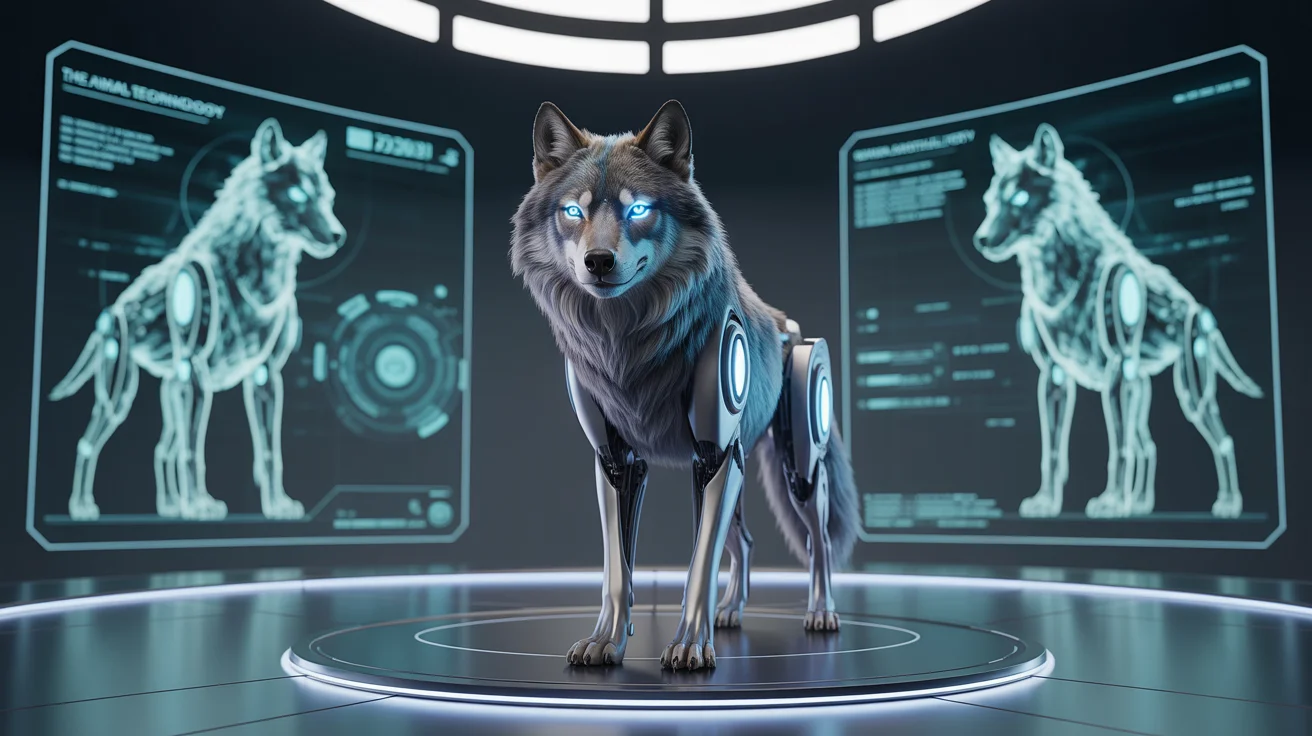The Rise of Animal Technology is evolving fast. This growing field combines biology, data science, and modern tech to support animals in new and powerful ways.
Whether for health, farming, or conservation, animal technology is changing how humans interact with animals across industries.
From smart collars for pets to AI in livestock care, animal technology is bridging the gaps between humans and animals.
How Animal Technology Is Transforming Animal Healthcare
Innovative technologies are deeply benefiting animal healthcare. Today, wearable devices, mobile apps, and artificial intelligence diagnose, track, and treat animals faster than ever before. This doesn’t just save time; it saves lives.
Veterinarians now use advanced tools like thermal imaging, digital X-rays, and biosensors, which help detect health problems in early stages. This technology is especially helpful for large-scale animal hospitals, research labs, and wildlife centers.
- Wearable health trackers monitor heart rate, temperature, and movement.
- AI tools analyze symptoms and recommend treatments in seconds.
- Innovative feeding systems help animals stay on the proper diet.
The Role of AI and Robotics in Wildlife Conservation
Thanks to artificial intelligence and robotics, wildlife conservation has seen major innovation. Drones, motion-sensing cameras, and satellite tracking help conservationists protect endangered species more efficiently.
With animal technology, real-time data on animal movements can be tracked. This helps researchers stop poaching, monitor migration patterns, and understand behavior better than ever before. The use of robots in animal rescue missions is also increasing rapidly.
- Drones survey forests, oceans, and deserts for wildlife without disturbance.
- Satellite collars provide long-term tracking of endangered animals.
- AI-powered camera traps capture rare animal moments automatically.
Smart Farming: Revolutionizing Livestock Management

In modern agriculture, the rise of animal technology is leading to “smart farming.” Farmers use IoT devices, cloud-based monitoring systems, and automated feeding units. These technologies increase productivity and reduce costs while ensuring better animal welfare.
Farm animals now wear digital ear tags and collars that track health, activity, and feeding habits. These devices alert farmers to any changes in behavior or signs of disease.
This innovative approach has several benefits:
- Boosts milk and meat production.
- Prevents disease outbreaks early.
- Reduces manual labor for farmers.
- RFID tags help in identifying and tracking each animal.
- Automatic milking machines save time and ensure cleanliness.
- Sensors alert farmers when an animal shows signs of distress.
Ethical Concerns and Data Privacy in Animal Technology
With all the progress in animal technology, ethical questions are rising too. Are animals being over-monitored? Is their privacy respected? Are we treating animals like machines?
These concerns must be addressed to maintain trust in this field. While tracking animals may seem harmless, excessive data collection could affect their natural behavior. It’s crucial to balance innovation with compassion.
Pet owners and farmers should also know how their animals’ data is used. Companies must provide clear policies and secure systems to prevent data misuse.
Animal Technology in Pet Care and Daily Life
Outsourcing can be a strategic move for recruitment agencies that want to scale quickly and focus on core competencies. Knowing when to outsource is critical to avoid burnout, inefficiency, and missed business opportunities.
The right time to outsource is when internal capacity can’t meet growing client demands. It often shows through delayed placements, stressed teams, or inconsistent quality. At this point, outsourcing can streamline operations and increase productivity.
Outsourcing is also helpful when specialized skills are needed, but hiring full-time staff isn’t feasible. Delegating certain tasks, such as payroll, candidate sourcing, or back-office support, can allow recruitment teams to concentrate on revenue-generating activities.
Animal Cloning and Genetic Tech: A Double-Edged Sword
One of the most controversial branches of animal technology is cloning. Scientists can now clone pets, livestock, and even endangered animals. While this can save rare species, it also raises grave ethical concerns.
Is it right to replicate animals just because we can? Genetic manipulation must be handled with strict rules to avoid harm. However, it also offers benefits in livestock breeding and veterinary research.
Cloning and gene-editing can:
- Improve disease resistance.
- Create animals with better productivity.
- Help save nearly extinct species from disappearing.
Still, strict laws and ethical frameworks must guide its use.
The Use of Machine Learning in Animal Behavior Analysis
Understanding animal behavior is vital in farming, wildlife management, and pet care. Machine learning is now helping decode complex animal actions. These systems learn from thousands of hours of animal footage and behavior data.
This helps identify distress, aggression, or illness early. Farmers, zookeepers, and vets can act quickly, reducing the risk of harm or loss. In rescue operations, AI tools can predict animal migration or natural disaster responses.
- Behavior analysis helps prevent injury or illness.
- Early warnings help protect both animals and humans.
- It supports better planning in zoos and shelters.
Education and Training Through Animal Simulators
Animal simulators offer a revolutionary way to educate and train people in handling animals safely and effectively. These virtual or physical simulators replicate real animal behavior, allowing learners to practice without risk. This approach is gaining popularity in veterinary and wildlife training.
Students can rehearse procedures like injections, surgeries, or emergency responses using simulators in a controlled environment. It builds confidence and skills before working with live animals, reducing mistakes and stress for both animals and learners.
Moreover, simulators promote ethical training by minimizing the need for live animals in early education stages. This technology-driven learning supports humane treatment and better preparation for real-world scenarios.
The Future of Animal Technology: What’s Coming Next?
Rise of Animal Technology is still evolving. In the future, we may see animals with advanced health chips, deep-learning collars, and animal-to-human communication tools. These technologies will likely focus on care, conservation, and comfort.
Startups and tech companies are investing more in this field. Governments and NGOs also work together to use tech for better wildlife protection and food security. The future looks promising, but we must always use these tools responsibly.
As AI and biotechnology grow stronger, animals will benefit more if guided by compassion and ethical values.
Benefits of Animal Technology at a Glance
Here’s a quick overview of how animal technology is improving lives:
- Saves animal lives through early diagnosis and treatment.
- Improves farming efficiency and reduces food waste.
- Protects wildlife from poaching and extinction.
- Enhances pet care and everyday animal management.
- Promotes ethical training and education through simulators.
Conclusion:
The Rise of Animal Technology is no longer just a concept; it’s a daily reality. From smart collars to AI-powered wildlife tools, the world is moving fast toward a future where animals are safer, healthier, and better understood.
This fusion of compassion and innovation is shaping a future where animal welfare is a priority and a shared global responsibility. As long as ethics, care, and awareness lead the way, animal technology will continue to benefit humans and animals.
Frequently Asked Questions:
Q1: What is animal technology used for?
Animal technology improves the lives and welfare of animals in healthcare, farming, pet care, and wildlife conservation.
Q2: Is animal technology safe for pets?
Yes, most pet tech is designed with safety in mind. Always choose trusted brands and consult a vet before using new devices.
Q3: Can animal technology help in saving endangered species?
Absolutely. Tools like satellite collars, drones, and AI monitoring play a key role in protecting and tracking endangered animals.
Q4: Are there risks in using AI with animals?
While helpful, AI can sometimes misinterpret animal behavior. Proper training and human oversight are essential.
Q5: Will animal technology replace human care?
No. It will assist but not replace human interaction. Technology supports better decisions and care, but emotional bonds still matter.




